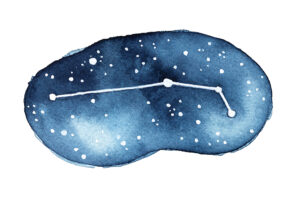Almanac December 2023

 December is a waltz with what’s still here; a slowing down; warmth from new directions.
December is a waltz with what’s still here; a slowing down; warmth from new directions.
These frigid mornings, dawn lingers.
Through the kitchen window, soft light unveils a council of leafless trees, silhouettes of cottontails, a frost-laced landscape.
As steam rises from the mug in your hands, you feel the sudden swell of loss. The sting of what’s not here. The emptiness of winter.
You deepen your breath, allowing the wave of grief to pass almost as quickly as it arrived.
Unexpectedly, a surge of joy follows.
When resident birds pierce the rose-pink silence with their silvery warbles and trills, you look toward the swinging feeders, eager to honor your end of the deal.
The agreement is simple: You offer sustenance; they offer life. You set down the mug for the bundling ritual.
Outside, the cold air enlivens you. Toting the bag of seed, you follow your breath to the wee, suspended altars. The winged ones disperse.
Despite the crunch of frozen earth, the starkness of the skyline, the withering garden, a softness cradles these early winter days.
Nature doesn’t mourn what’s gone like we do.
As you refill the feeders, a cardinal whistles from a nearby holly; chickadees sing among towering pines.
Winter isn’t empty, you remember. Nor is it quiet. It simply offers space for deeper listening.
In a way Winter is the real Spring — the time when the inner things happen, the resurgence of nature.
— Edna O’Brien
River in the Sky
The winter sky is a stargazer’s dream. These crystalline nights, don’t let the cold air stop you from getting intimate with Orion and company.
Among the best-seen constellations this month — Aries (the ram), Triangulum (the triangle), Fornax (the furnace), Horologium (the clock) and Perseus — is a vast celestial river that begins at the footstool of the Hunter and meanders down, down, down to the southern horizon and Achernar, the constellation’s brightest star.
Among the 48 original constellations catalogued by Greek astronomer Claudius Ptolemy, Eridanus requires a dark sky. It may be faint, but if you’re able to spot this massive star cluster — home to the so-called Eridanus supervoid and the Witch Head Nebula — surely you won’t regret the extra effort.

Light of Arthur
Days are getting shorter. On December 21, the winter solstice marks the shortest day — and longest night — of the year.
Ancient cultures birthed countless myths and legends about the solstice. Scots attributed the darkening days to a giant hag-goddess named Cailleach, queen of winter. Finnish myth tells of a shape-shifting witch who steals the sun and moon. Nordic people called the solstice “Mother’s Night,” believing that their goddesses gave birth at the season’s darkest hour to offer more light.
In Druidic tradition, the Wheel of the Year now revolves to Alban Arthan, a winter solstice festival that celebrates the light of King Arthur, symbolically reborn as the Mabon (sun child).
This much is true: From darkness comes light. May we trust the grand unfolding, honoring the journey from winter to spring again and again. PS

